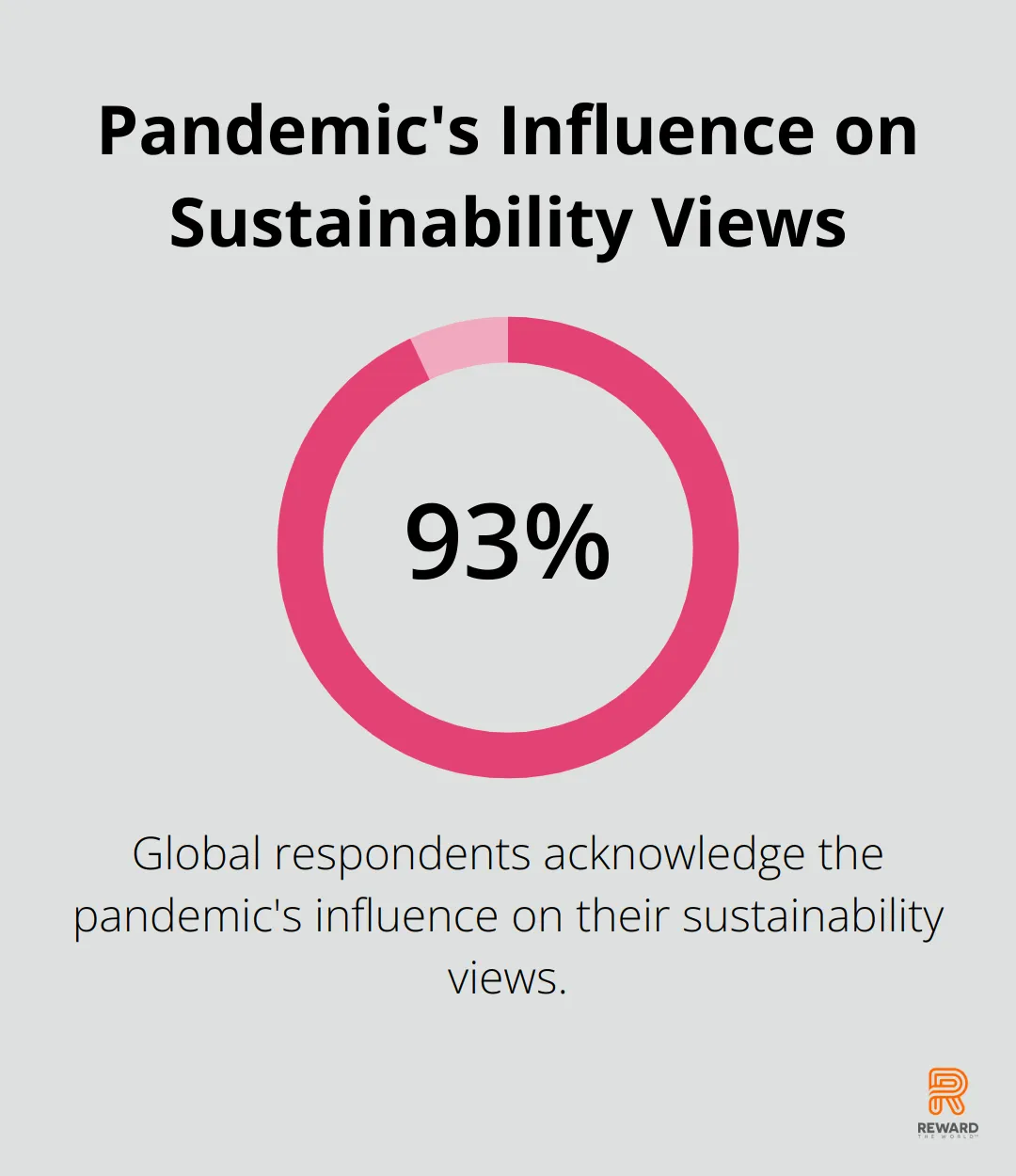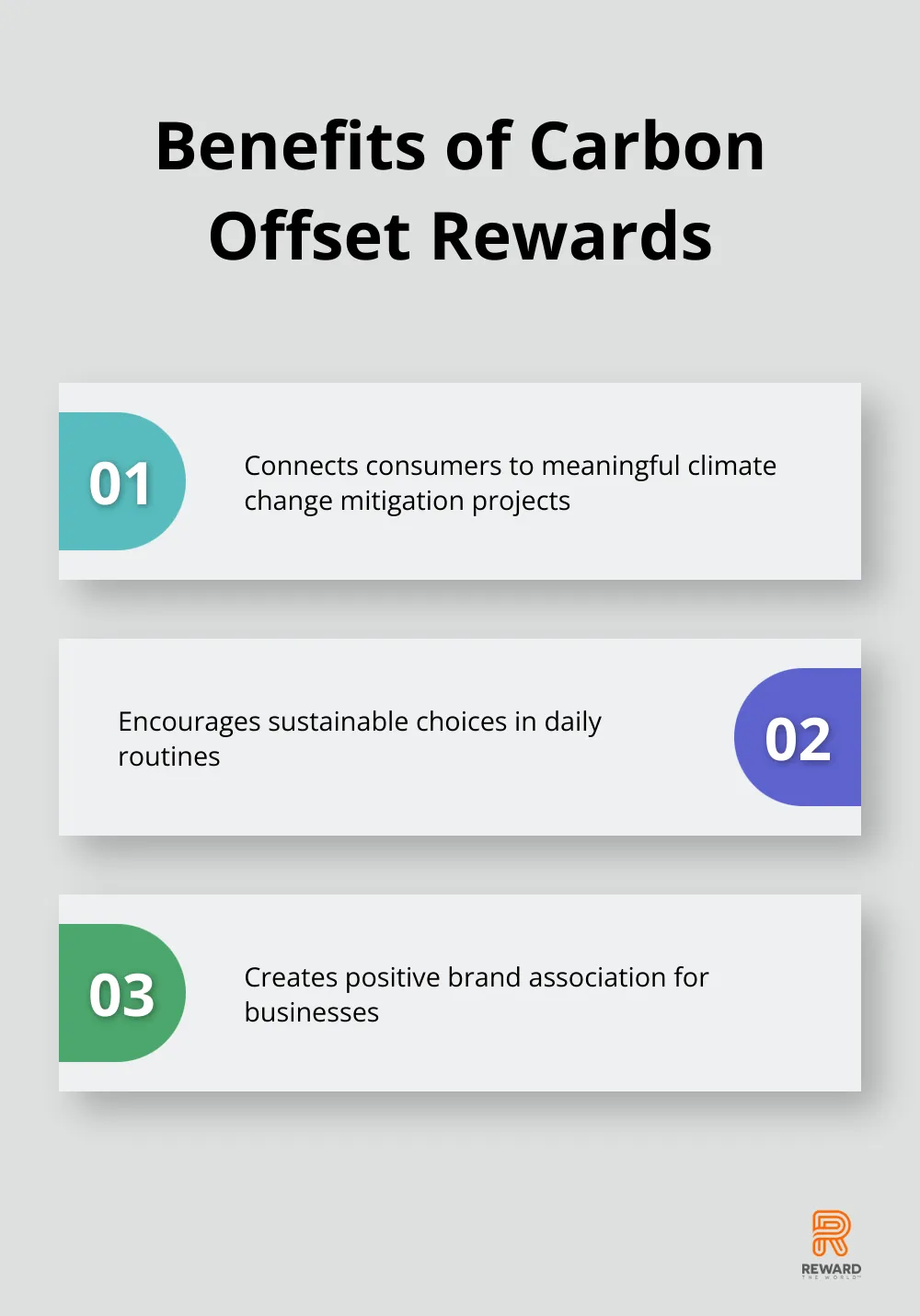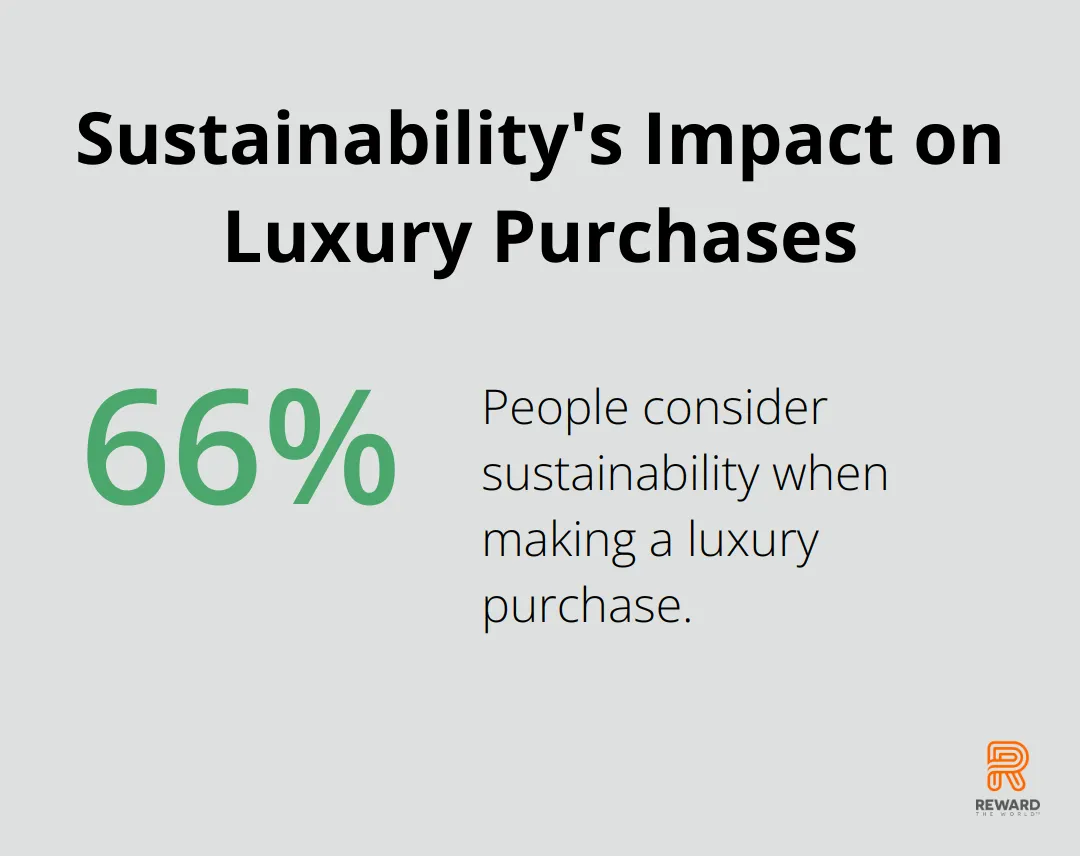
Green consumerism is on the rise, with more shoppers prioritizing eco-friendly products and services. This shift in consumer behavior presents a unique opportunity for businesses to align their incentive strategies with environmental values.
At Reward the World, we’ve seen firsthand how sustainable rewards can drive customer loyalty and positive brand perception. In this post, we’ll explore effective green incentives that resonate with modern consumers and provide practical tips for implementing them in your business.
Why Consumers Are Embracing Green Choices
The landscape of consumer behavior has transformed dramatically, with environmental consciousness now at the forefront. A significant shift in purchasing decisions reflects the growing awareness of ecological impacts.
Information Empowers Consumers
Modern consumers access more information than ever before. A 2021 study by the IBM Institute for Business Value revealed that 93% of global respondents acknowledged the pandemic’s influence on their sustainability views. This increased awareness fuels demand for eco-friendly products and services across industries.

Wallets Speak Volumes
Consumers now wield their purchasing power to support sustainable practices. This trend is particularly strong among younger demographics.
Social Media’s Green Influence
Social media platforms act as powerful catalysts for green consumerism. Influencers and environmental activists educate and inspire their followers about sustainable living through these digital channels. This digital word-of-mouth has sparked a 71% increase in online searches for sustainable goods globally over the past five years.
Holding Companies Accountable
Consumers now demand corporate accountability for environmental impact. This consumer activism pushes businesses to adopt more transparent and eco-friendly practices.
The Rise of Eco-Conscious Rewards
As consumers prioritize sustainability, businesses must adapt their incentive strategies. Reward programs that align with eco-conscious values (such as those offered by Reward the World) are gaining traction. These programs not only foster customer loyalty but also reinforce positive brand perception in an increasingly environmentally aware market.
The message resonates clearly: businesses that align with eco-conscious values position themselves to capture the hearts and wallets of modern consumers. This shift towards green incentives opens up exciting possibilities for innovative reward strategies that we’ll explore in the next section.
How Green Incentives Win Over Modern Shoppers
Green incentives have become powerful tools for attracting and retaining customers in today’s eco-conscious market. Let’s explore some effective strategies that resonate with modern shoppers.
Eco-Friendly Product Discounts and Loyalty Programs
One of the most direct ways to incentivize green purchases is through targeted discounts on eco-friendly products. This approach encourages sustainable choices and educates consumers about environmentally friendly options.
Loyalty programs can also reward eco-conscious behavior. These programs create a win-win situation: customers save money while making sustainable choices, and businesses benefit from increased loyalty and positive brand association.
Carbon Offset Rewards
Carbon offsets can help connect consumers to climate change mitigation projects that may be more meaningful to their daily routines. This innovative approach allows shoppers to earn points or credits based on the carbon emissions saved through their purchases or actions.
An airline might offer carbon offset points for passengers who choose direct flights or opt for electronic boarding passes. These points could then be redeemed for future travel or donated to environmental causes. Similarly, a ride-sharing app could reward users who choose electric or hybrid vehicles with carbon offset credits.

Gamification of Green Behaviors
Gamification turns sustainability into an interactive and fun experience. Mobile apps that track and reward eco-friendly actions can promote sustainable habits effectively.
A waste management company could develop an app that challenges users to reduce their household waste, offering points and badges for meeting recycling goals. A utility provider might create a game where customers compete to lower their energy consumption, with real-world rewards for top performers.
These green incentives tap into the growing demand for sustainable options while fostering long-term customer loyalty. As we move forward, it’s essential to understand how businesses can implement these strategies effectively. The next section will explore practical steps for integrating green incentives into your business model.
How to Implement Green Incentives in Your Business
Partner with Environmental Organizations
Collaborating with reputable environmental organizations adds credibility to your green incentives program. For instance, outdoor retailer REI partners with the National Forest Foundation, allowing customers to donate their dividend to forest conservation efforts. This partnership supports a worthy cause and reinforces REI’s commitment to environmental stewardship.
When you select a partner, look for organizations whose mission aligns with your business values and customer interests. A food delivery service might partner with a local food waste reduction nonprofit, while a tech company could team up with an e-waste recycling initiative.
Use Technology for Seamless Rewards
Technology plays a key role in implementing and managing green incentive programs. Platforms like Reward the World offer turnkey solutions that simplify the setup and management of eco-friendly reward systems. These platforms can handle everything from tracking customer actions to distributing rewards, all while providing valuable data insights.
A grocery chain could use a mobile app to track customers’ use of reusable bags, automatically applying discounts or awarding points for each use. This seamless integration of technology encourages sustainable behavior and enhances the overall shopping experience.
Measure and Communicate Impact
To maximize the effectiveness of your green incentives, you must measure their impact and communicate the results to your customers. A study found that 66% of people consider sustainability when making a luxury purchase. Showing customers the tangible results of their eco-friendly choices reinforces positive behaviors and builds stronger connections.

Try creating a dashboard that shows both individual and collective impact. A ride-sharing company could display metrics like total carbon emissions saved by users who choose electric vehicles. An e-commerce platform might showcase the number of trees planted through customer purchases of sustainable products.
Use clear, relatable metrics. Instead of just stating the amount of carbon offset, translate it into everyday terms. For example, “Your sustainable choices this month saved the equivalent of 10 trees (or powered a home for a week).”
Customize Incentives for Your Audience
Tailor your green incentives to match your target audience’s preferences and values. Different demographics may respond better to various types of rewards or sustainability initiatives. For instance, younger consumers might prefer digital rewards or experiences, while older customers may value tangible eco-friendly products.
A beauty brand could offer loyalty points for returning empty packaging for recycling, appealing to environmentally conscious customers. A bank might provide better interest rates on savings accounts for customers who opt for paperless statements, combining financial incentives with eco-friendly practices.
Educate and Engage Employees
Your employees play a vital role in the success of any green incentive program. Educate your staff about the importance of sustainability and how your green incentives work. Rewarding employees for green initiatives can significantly boost their engagement, motivation, and commitment to sustainability.
Consider implementing internal green incentives for employees as well. This could include rewards for using public transportation, reducing office waste, or participating in community clean-up events. When employees are personally invested in sustainability, they become powerful advocates for your green initiatives.
Final Thoughts
Green incentives have become a powerful tool for businesses to connect with modern consumers and drive positive environmental change. Eco-conscious shoppers increasingly make purchasing decisions based on sustainability factors, creating a significant opportunity for companies to align their reward strategies with these values. We anticipate more innovative approaches to sustainable rewards, including personalized incentives based on individual environmental impact and cross-industry collaborations to amplify positive outcomes.
For businesses looking to thrive in this evolving landscape, adopting sustainable reward strategies is no longer optional-it’s essential. Companies can attract and retain environmentally conscious customers while contributing to meaningful ecological progress. Advanced technologies like blockchain and AI will likely play a larger role in tracking and verifying sustainable actions, enhancing transparency and trust in green incentive programs.
We at Reward the World commit to helping businesses navigate this shift towards sustainability. Our platform offers a comprehensive solution for implementing effective sustainable rewards programs, allowing companies to engage customers, boost loyalty, and make a positive impact on the environment. The time to act is now-integrate green incentives into your business strategy and join the movement towards a more sustainable future.
